New and popular LG monitors for work and home.
LG is not only famous for its monitors and TVs for PC monitors. It produces the best matrices and provides great features in all its devices. Which LG flat-screen monitors will suit your needs?
You can look through all flat-screen monitors or search by your particular wishes considering the size and the type of display to pick the one that suits you most but the FixThePhoto team has selected 10 best LG monitors to help you find the one that meets your requirements.
Although people tend to focus more on a computer, selecting a proper monitor is also important. The majority of these LG monitors may seem to offer similar features but they have different characteristics which can greatly affect your decision.
By checking the parameters, shapes, sizes, and by clarifying your goal, you can determine which type of monitor is suitable for you. Here you can find the best LG monitor either you are interested in gaming, professional or general use.
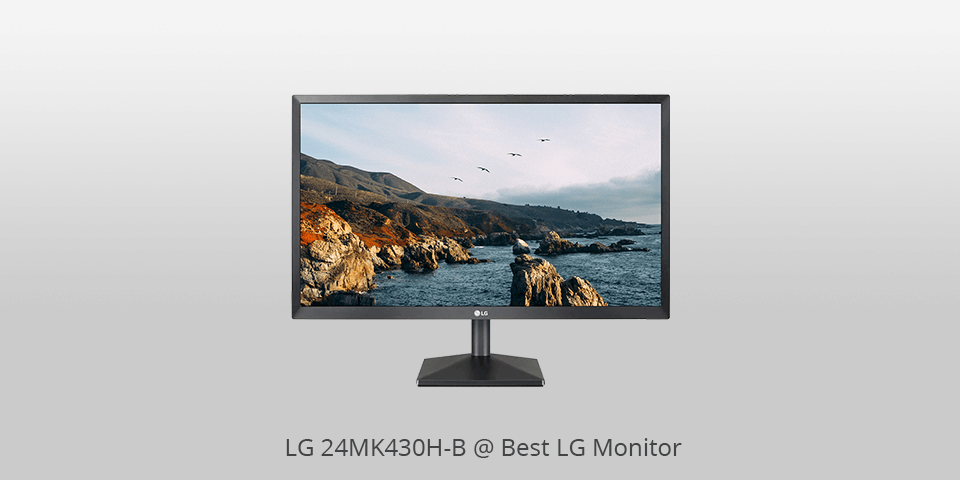
Screen size: 23.8-inch | Aspect ratio:16 : 9| Resolution: 1920 x 1080| Brightness:250 : 1 cd/m2 | Refresh rate: 75 Hz | Response time: 5ms | Viewing angle:178 / 178| Contrast ratio: 1000: 1| Color support: 99% sRGB
⊕ Great image quality
⊕ AMD FreeSync technology
⊕ Dynamic synchronization
⊕ Black Stabilizer technology
⊖ No 90-degree rotation on stand
1080 Full HD resolution together with the IPS matrix produces an amazing image and lets you enjoy details from all viewing angles. Due to AMD FreeSync technology, you will have a great gaming experience without any interference or delays The dynamic mode of action synchronization lets you respond to the opponents’ actions straight away and attack without any delay.
It synchronizes your feelings with real-time scenes in dynamic games and reduces input delays. Due to Black Stabilizer, there is a full visual clarity even in games where you are in the darkness for a long time. This technology makes dark areas brighter, which allows you to find opponents, who are hiding in the shadows and quickly react.
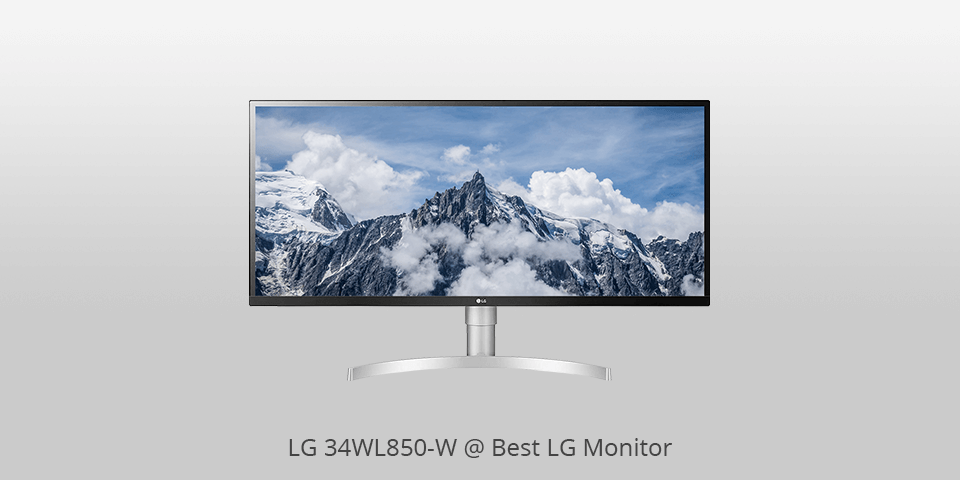
Screen size: 34-inch | Aspect ratio:21 :9 | Resolution: 3440 x 1440 | Brightness: 400: 1 cd/m2 | Refresh rate: 60 Hz | Response time: 5ms | Viewing angle:178 /178 | Contrast ratio:1000:1 | Color support: 135% sRGB
⊕ AMD FreeSync technology
⊕ Thunderbolt 3 connection
⊕ DisplayPort interface
⊕ Great color rendering - Nano IPS
⊖ Suitable only for laptops with power up to 60W
This is the best LG monitor if you are looking for a model with diagonal of 34 inches and decent specs for watching movies, communicating on social networks, working with images and videos, etc.
In fact, a larger diagonal allows performing practically all tasks in a more convenient way. This monitor is also very bright - 400 cd/m2 which is higher than the majority of modern monitors offer.
If you are in a room without direct sunlight, you are not going to use even half of its brightness but it’s beneficial to have a monitor that is brighter than its competitors on the market.
The viewing angles that this monitor provides are also nice and reach 178 degrees vertically and horizontally. The frame refresh rate is 60Hz.
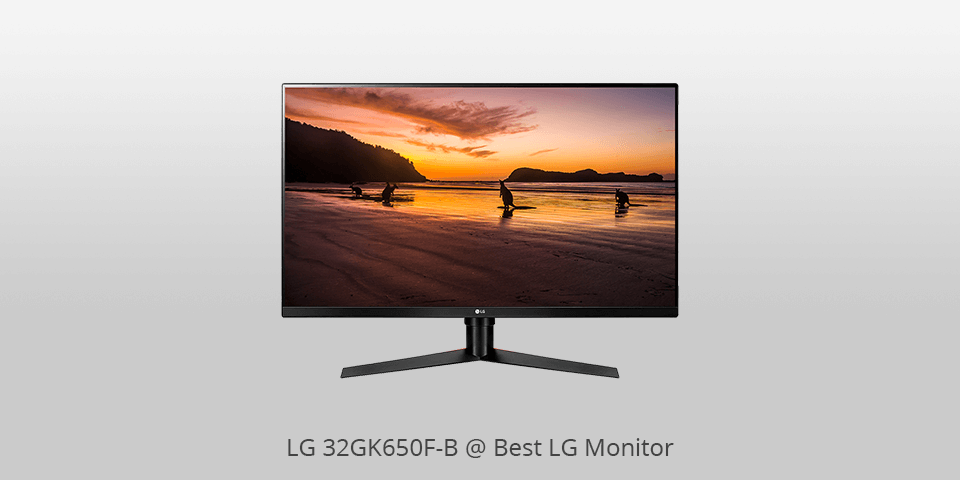
Screen size: 32-inch | Aspect ratio:16 : 9| Resolution:2560 x 1440 | Brightness:350 : 1 cd/m2 | Refresh rate: 144 Hz | Response time: 1 ms | Viewing angle: 178/ 178| Contrast ratio:3000 :1 | Color support: 118% sRGB
⊕ QHD resolution
⊕ Offers Radeon FreeSync technology
⊕ A refresh rate of 144Hz
⊕ Virtually frameless
⊖ Not the best viewing angles
⊖ Blurry image for 144Hz monitor
It is a good LG monitor for gaming which provides satisfactory overall performance even if you are engaged in other activities. The VA panel provides rich, uniform blacks.
This 32-inch monitor has low input lag, great peak brightness, nice gray uniformity and good reflection processing. LG 32GK650F-B also supports the FreeSync technology even from the latest NVIDIA card.
However, even though it offers fast response time, some transitions can be slow which is very noticeable in dark scenes. Due to the VA panel, the viewing angles aren’t the best possible, which is not convenient for sharing the newest trends with your friends.
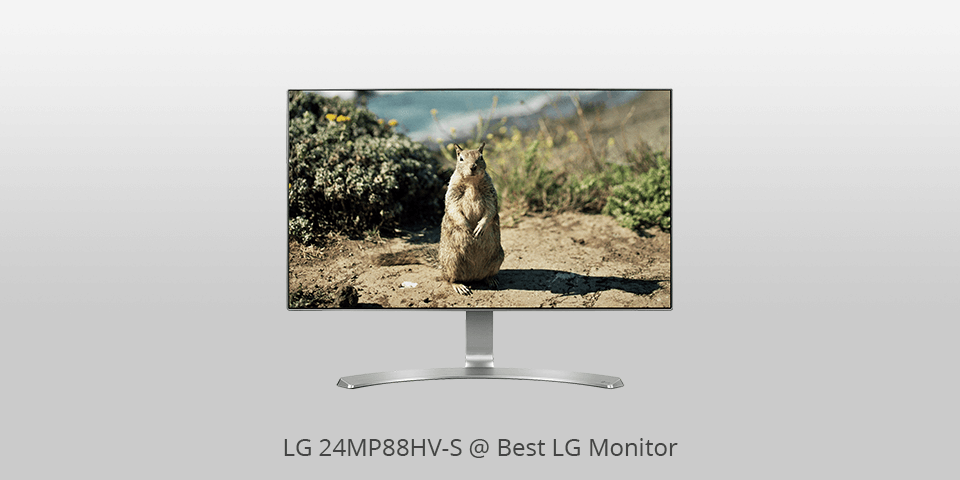
Screen size: 24-inch | Aspect ratio: 16:9| Resolution: 1920 x 1080 | Brightness:250 : 1 cd/m2 | Refresh rate:60 Hz | Response time:5 ms | Viewing angle:178 /178 | Contrast ratio:1000:1 | Color support: 99% sRGB
⊕ Frame-free design
⊕ Black Stabilizer technology
⊕ Very accurate color reproduction
⊕ Has an OnScreen Control menu
⊖ Arcline stand can be shaky
⊖ Lack of USB Ports
LG 24MP88HV-S is the best LG monitor for those who are stepping into gaming and are searching for a setup update. With more than 99% sRGB coverage, this monitor is a great option for professional photographers, graphic designers or those who want to see high-precision colors.
The modern design of this monitor is emphasized by the new ArcLine stand. A seamless base curve guarantees stability and reliable performance with a touch of sophistication.
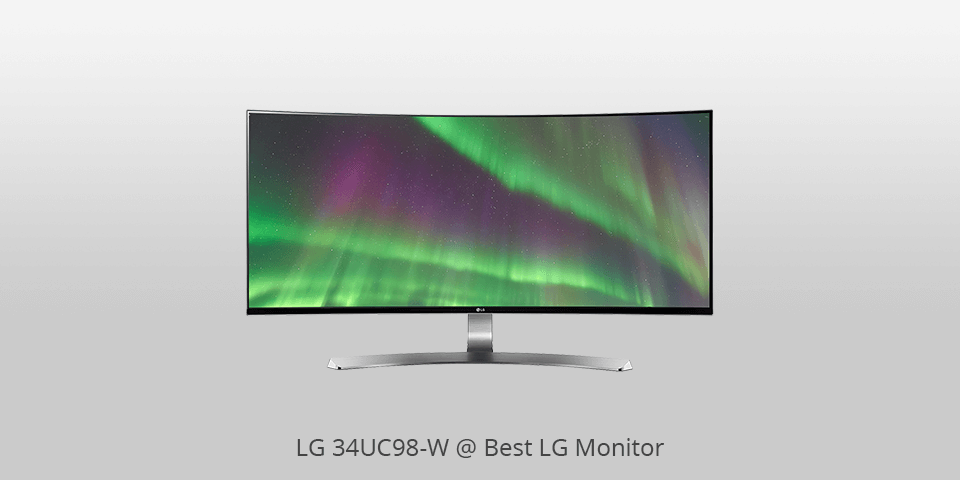
Screen size: 34-inch | Aspect ratio:21 :9 | Resolution:3440 x 1440 | Brightness: 300: 1 cd/m2 | Refresh rate:60 Hz | Response time:5 ms | Viewing angle:178 / 178| Contrast ratio:1000 : 1| Color support: 99 %sRGB
⊕ Modern design
⊕ A lot of features
⊕ AMD FreeSync technology
⊕ Amazing gaming performance
⊖ A bit expensive
⊖ Color accuracy isn’t the best possible
⊖ Limited warranty
Gaming monitors with curved displays are perfect for those who want a more immersive gaming experience that is impossible to achieve with flat-screen displays.
However, usually, the bigger the screen, the more expensive it is. LG 34UC98-W is not an exception.
This is a large 34-inch LG monitor that offers a steeper curve than the majority of displays provides and a high price. It's an In-Plane Switching (IPS) display which uses AMD's FreeSync technology to provide seamless gaming performance.
Among the color adjustments, you will find three Gamma settings, four Color Temperature settings, Red, Green, and Blue intensity settings, and Six-Color settings with individual Hue and Saturation adjustments for every color.
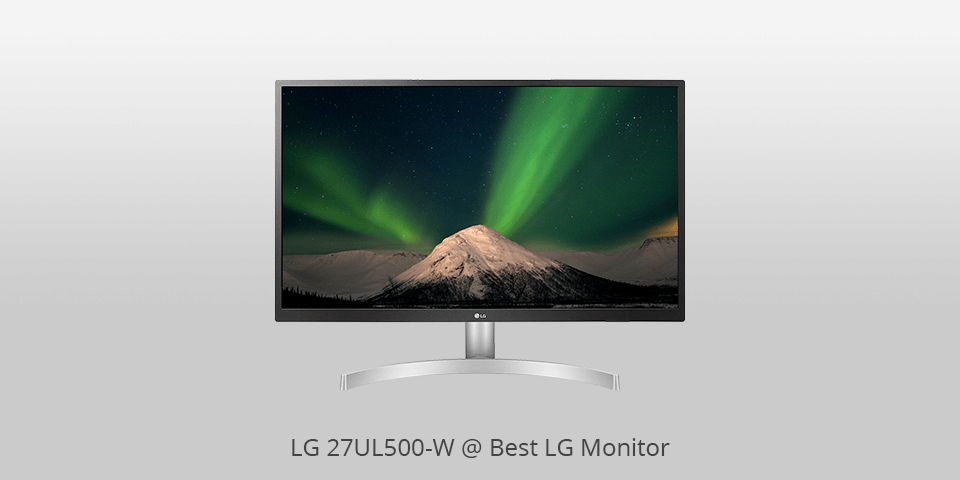
Screen size: 27-inch | Aspect ratio: 16: 9| Resolution: 3840 x 2160| Brightness:300 :1 cd/m2 | Refresh rate: 60 Hz | Response time: 5ms | Viewing angle:178 /178 | Contrast ratio:1000 : 1| Color support: 99% sRGB
⊕ Amazing color accuracy
⊕ Great gaming performance
⊕ No calibration needed
⊖ More expensive than similar monitors
⊖ Poor color accuracy
The monitor is pre-calibrated, so you can get accurate colors right out of the box. However, for professional work with color, you need to use a special calibrator to fix color reproduction.
Since this monitor doesn’t offer a wide color gamut, sufficient brightness, local dimming for deeper blacks, contrast, the HDR viewing experience will be disappointing. Some HDR-compatible content will look nicer (mostly console games), but in most cases, you will get either oversaturated or blurry colors.
Remember that you will have to use the scaling option to make small elements, such as text, readable. Scaling will also make it clearer and more accurate but create less free screen space.
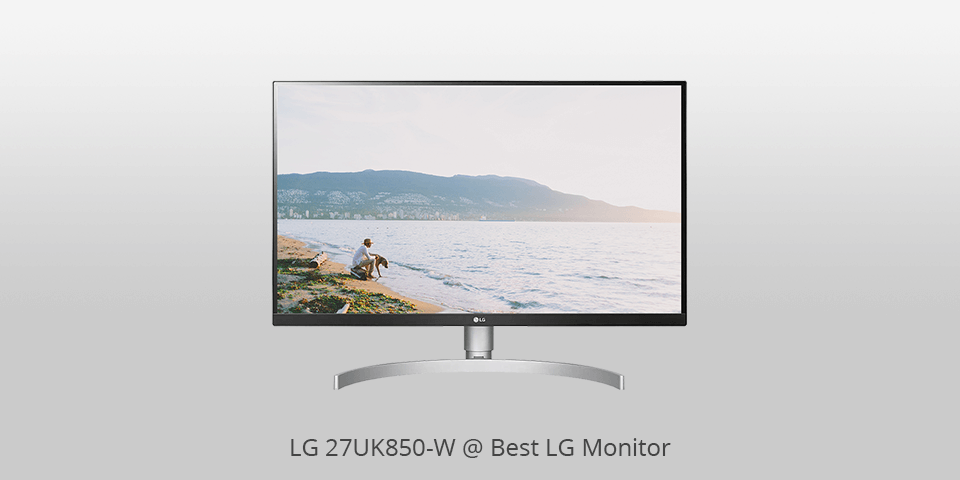
Screen size: 27-inch | Aspect ratio: 16: 9| Resolution: 3840 x 2160 | Brightness:350 : 1 cd/m2 | Refresh rate:60 Hz | Response time:5 ms | Viewing angle:178 /178 | Contrast ratio:1000 : 1| Color support:99% sRGB
⊕ Offers sharp UHD image detail
⊕ Great gaming performance
⊕ AMD FreeSync technology
⊕ Has a USB-C port
⊖ Greens are slightly distorted
Here you can adjust such settings as Brightness, Contrast, Color temperature and Blacks stabilizer. In total, it has 14 image presets including Reader, sRGB, Color Weakness, and SMPTE-C, designed to improve the viewing experience.
If you frequently switch between different tasks, you can split your screen into 2, 3, 4, 6 or 8 windows but the majority of these options exceed what the native operating system supports.
LG 27UK850-W can be called the best LG monitor for average gamers because it supports AMD FreeSync technology and offers a lot of features for enhancing the gaming experience.
It has an Ultra HD panel and a refresh rate of 60Hz, which is a standard for all Ultra HD panels on the market now.
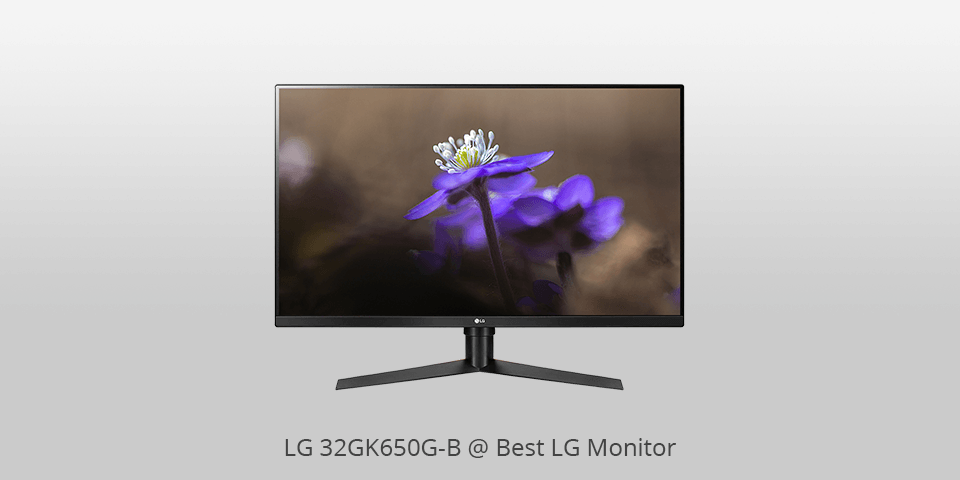
Screen size: 32-inch | Aspect ratio:16 : 9| Resolution2560 x 1440 | Brightness: 350: 1 cd/m2 | Refresh rate: 165 Hz | Response time:1 ms | Viewing angle:178 /178 | Contrast ratio:3000 :1 | Color support: 99% sRGB
⊕ Crisp, realistic colors
⊕ Good sRGB color gamut coverage
⊕ Small VA glow and insignificant 'black crush'
⊖ Inferior color uniformity compared to IPS models
This is one of the best LG monitors if you’re looking for a huge 32” display paired with premium gaming features that allow you to enjoy the ultimate viewing experience.
This product has a max refresh rate of 165Hz and offers G-Sync support to deal with tears and stutters without any latency issues. The 32GK850G is a terrific choice for gamers that are looking for an e-sports ready model but don't want to sacrifice the immersive image produced by a big screen.
Among the included features for gamers, you’ll find the Dynamic Action Sync, which provides smooth, seamless motion while the Black Stabilizer helps you enjoy fully-detailed environments even in darker scenes.
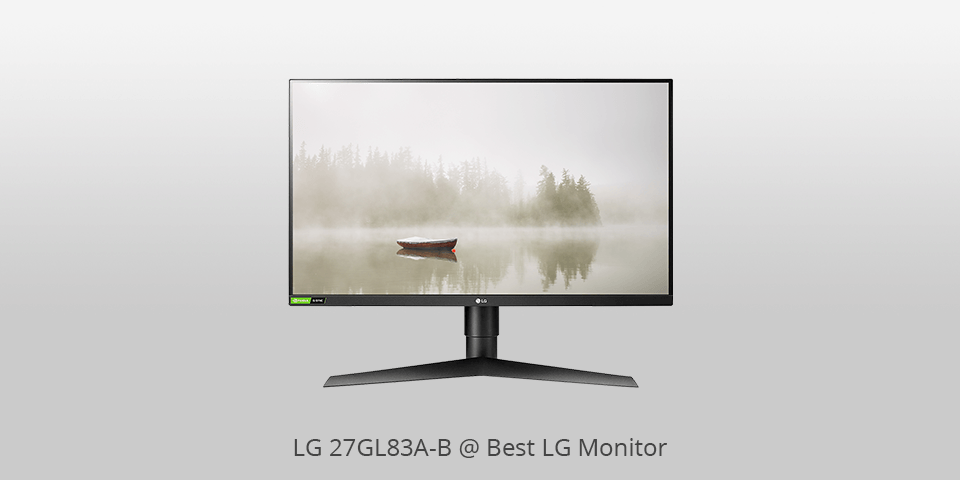
Screen size: 27-inch | Aspect ratio: 16: 9| Resolution: 2560 x 1440 | Brightness: 350: 1 cd/m2 | Refresh rate: 144Hz | Response time:1 ms | Viewing angle:178 / 178| Contrast ratio:1000 : 1| Color support: 99 % sRGB
⊕ Top-notch motion handling
⊕ Extremely small input lag
⊕ Impressive factory-calibrated accuracy
⊖ Below average contrast ratio and black uniformity
The 2783A is a solid monitor for virtually any use. It offers fantastic motion handling and incredibly small input lag which makes it arguably the best LG gaming monitor in its class.
You also get to enjoy broad viewing angles and high peak brightness making this monitor a solid option for a bright workspace. Thanks to the offered viewing angles, you can comfortably share your screen with colleagues.
Sadly, finding a place for this product isn’t exactly easy but its terrific brightness in well-lit environments makes up for that drawback. As you can guess, the size of this LG monitor also makes it a great fit for watching movies and Netflix series as the native resolution lets you enjoy a crisp, highly-detailed image.
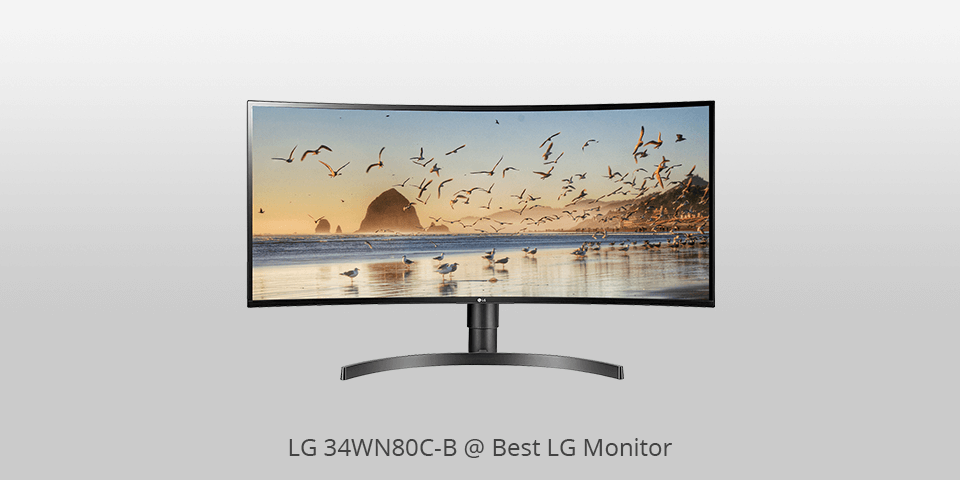
Screen size: 34-inch | Aspect ratio:21 :9 | Resolution: 3440 x 1440 | Brightness: 300: 1 cd/m2 | Refresh rate: 60 Hz | Response time: 5 ms | Viewing angle: 178/ 178| Contrast ratio:5000 : 1| Color support: 99% sRGB
⊕ Extra-wide curved display
⊕ Bezel-less design
⊕ 60Hz refresh rate and FreeSync support
⊖ Underdeveloped gaming modes
If you’re looking for a relatively cheap LG gaming monitor, this model deserves your attention. It offers a 21:9 aspect ratio which can be considered more convenient than a taller 4K display as the added width is better suited for watching movies and provides you with additional workspace.
The size of the screen is also well-suited for first-person shooter games, allowing you to see more of the action and traverse the area more efficiently while offering good performance.
| Image | Name | Features | |
|---|---|---|---|
 |
LG 24MK430H-B
Our Choice |
CHECK PRICE → | |
 |
LG 34WL850-W
Gaming |
CHECK PRICE → | |
 |
LG 32GK650F-B-QHD
Cheap |
CHECK PRICE → |

A monitor’s response time corresponds to the duration it takes the screen to switch pixels from black to white or, if it’s GTG, from one shade of grey to another. The longer the response time, the more motion blur you'll notice when playing video games or watching action-packed movies. That being said, fast response time isn't very important unless you’re looking for the best LG monitor for gaming. If you are, then the max acceptable response time is 5ms, while the top models can go as low as 0.5ms.
When deciding which LG monitor to buy, the first thing you have to think about is whether a specific model can be connected to your system. Check what ports your PC has, and what inputs are included on the monitor. If you have a match, then feel free to get the monitor, but if you don’t, you’ll need to get an adapter.
VGA is the oldest video output that is still included in modern PCs, although mostly in budget-friendly systems and work-oriented laptops (to ensure you can connect the computer to older projectors). VGA is a small trapezoidal input that is typically packaged in a screw-on blue cord.
This connectivity option only transfers the video signal without any sound. Since it works on an analog standard, VGA doesn’t have a max resolution or refresh rate limit, but you’re restricted by the consumed electrical power and the length of the cable. In most cases, VGA is only acceptable for monitors that are below the standard 1080p resolution, which means it’s not suitable for most modern LG gaming monitors. In essence, the resume for VGA boils down to: don’t use it unless it’s the only option you have.
The next thing you have to think about when picking from different LG monitors is the image format (which is defined by the proportions of the monitor’s height and width). The most common types include:
4:3 is a traditional image format that is quite outdated these days. It’s primarily suited for everyday usage (web browsing, office software, etc.), while gamers and movie fans definitely need something wider as such a nearly-square image significantly deforms the picture.
16:9 is a widescreen format that has been viewed as the standard for many years. The width of such screens far exceeds the height, which allows you to enjoy a more realistic picture when viewing movies, images, or playing video games. Such monitors are often the best compromise between a good aspect ratio and a cheap price.
21:9 is currently the most widely used image format. Such a size is capable of replacing 2 screens, allows you to enjoy a panoramic image, and is perfect for having several windows open simultaneously and multitasking.
Lately, two new image formats have entered the market – 24:10 and 32:9. They’re not particularly popular yet, but if you want to enjoy as big of an aspect ratio as possible, such monitors are definitely worth considering.
Consider Flicker-free if You'll Be Staring at the Screen for Over 8 Hours
If you want to get the best LG monitor, make sure it’s flicker-free regardless of the chosen brightness value, so that your eyes don’t get tired as quickly when working in front of the screen for a long time. As an alternative that is more expensive, prefer Mac monitors.
A monitor’s refresh rate stands for the number of times the whole screen is refreshed in a second, and this value is reflected in Hertz (Hz). If a specific monitor’s refresh rate is stated to be 60Hz, that means the display is refreshed 60 times each second.
If you’re a casual gamer on a tight budget and you’re looking at an LG monitor comparison table, you should only consider monitors with at least 60Hz, which is the accepted standard in the majority of modern products. However, while such a value is acceptable, when it comes to graphics-heavy games like Call of Duty or Need for Speed Heat, 60Hz can cause some image blur and screen tears due to not being able to keep up with what’s happening on the screen.
This is why more serious video game enthusiasts buy monitors with a 120Hz or 144Hz refresh rate so that they have an edge on their opponents when battling in multiplayer games. For every 120 frames such gamers get to see, people with 60Hz monitors only see 60, meaning their ability to react swiftly is limited. If you want to get a 144Hz monitor, keep in mind that it only works with specific cables like DP, HDMI 1.3, and DVI-D.
These are Korean monitors. LG Display is situated in South Korea, and they currently run 9 factories and 7 back-end assembly enterprises across Korea, China, Poland, and Mexico.
LG used to stand for Lucky Goldstar and it’s a South Korean brand that produces smartphones, TVs, monitors, and all kinds of home appliances. Over the years, the original “Lucky Goldstar” explanation was replaced with “Life’s Good” in all their recent advertisement campaigns.
Overall, the offered quality is very high as even Dell, Apple, and Samsung monitors are equipped with LG panels (the screen display). The only company that arguably makes better integrated screens is Apple.
A standard LCD monitor should typically last for about 30,000-60,000 hours of usage, which should equal 10 to 20 years even if you have the screen turned on for 8 hours each day.

 Rating
Rating